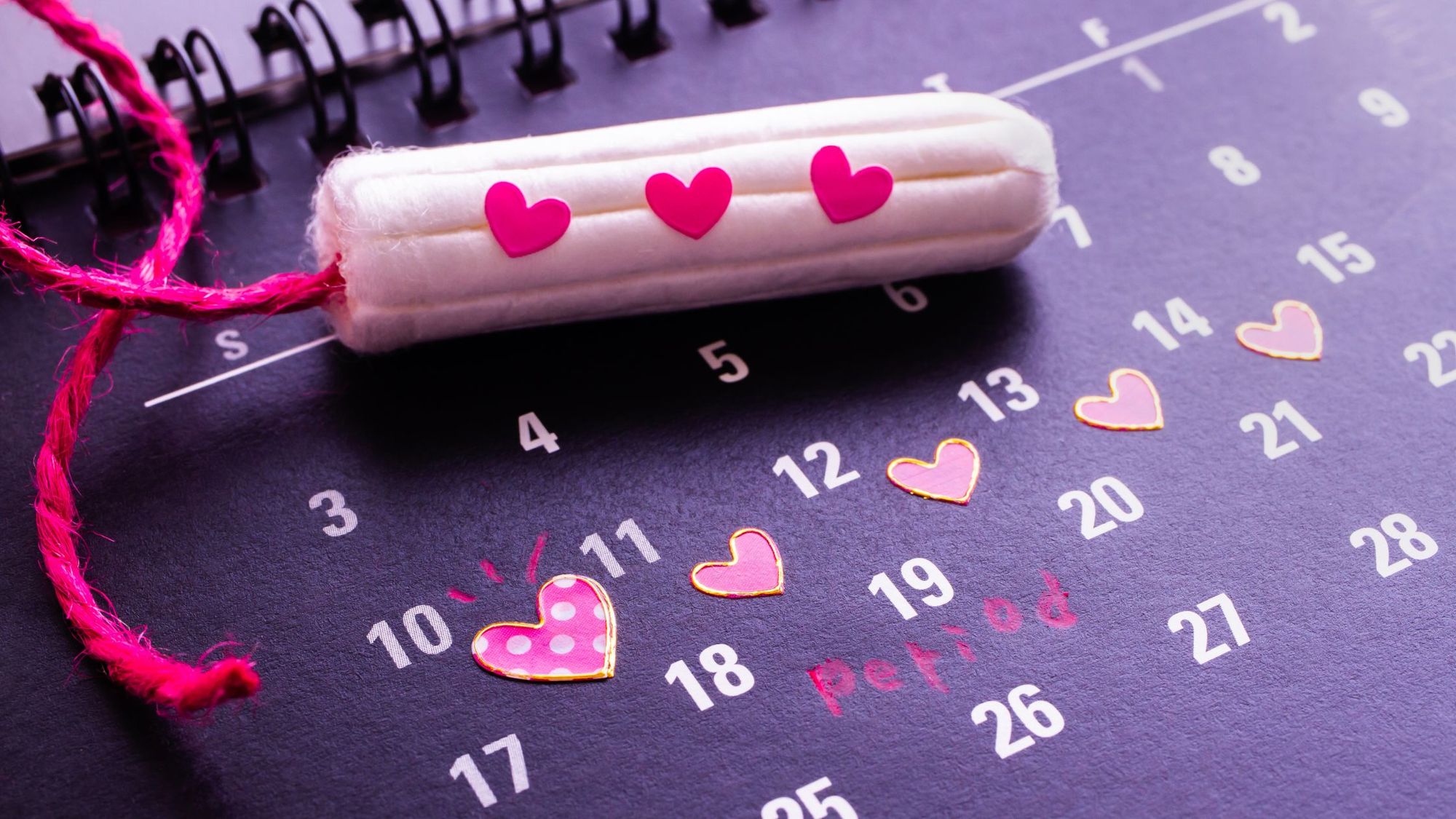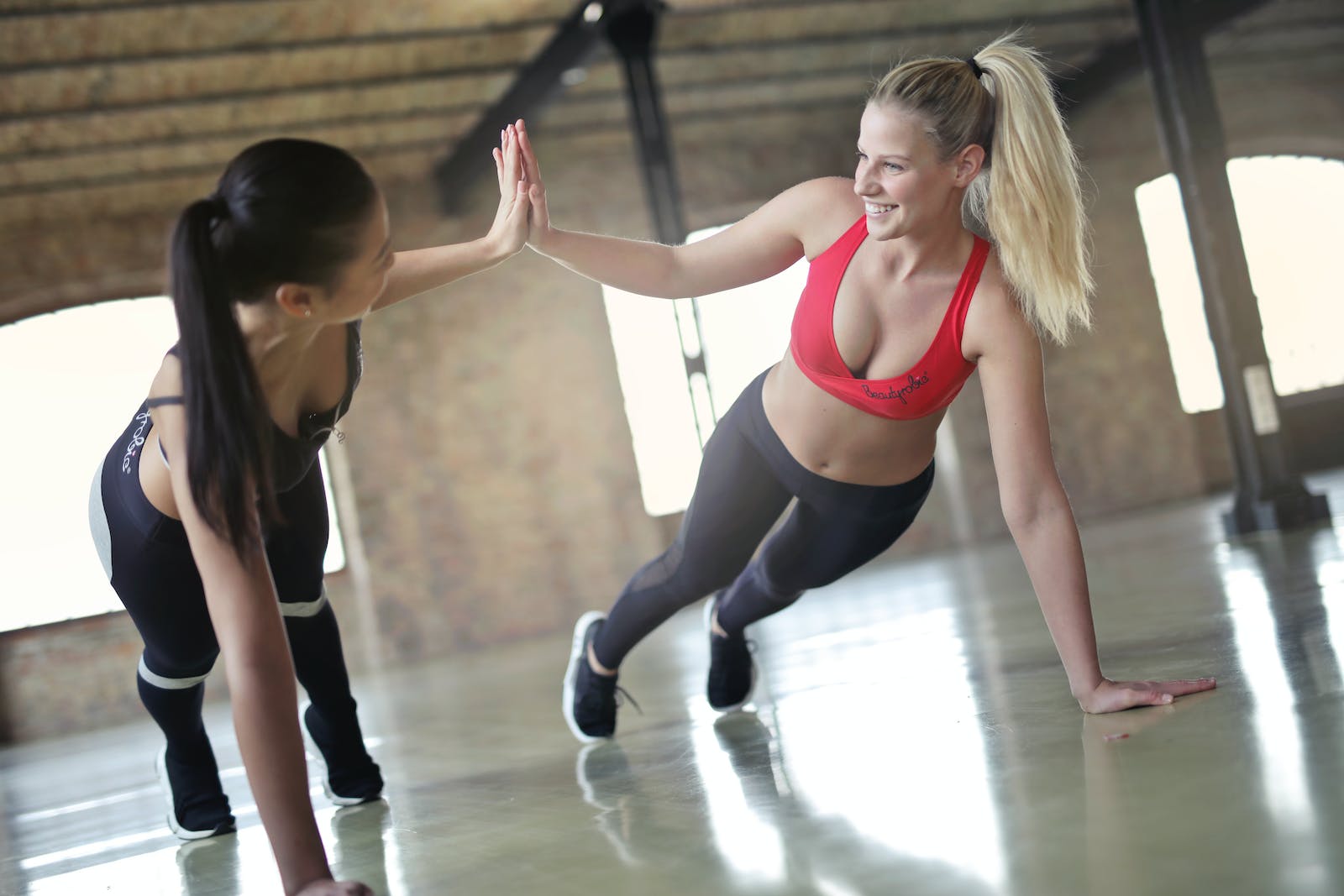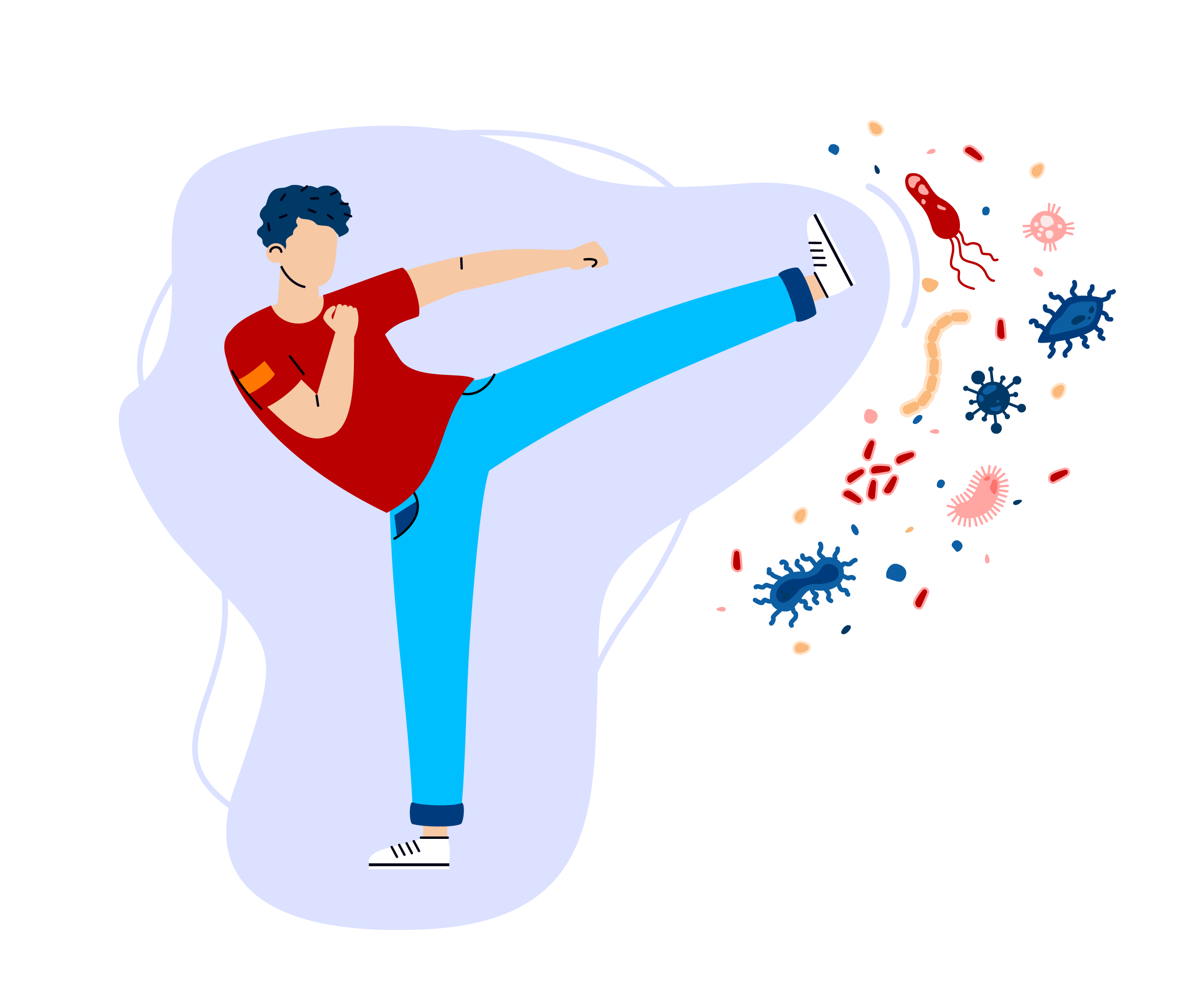
Following an effective menstrual cycle workout plan can help you feel motivated to move even when you have PMS (premenstrual syndrome) symptoms or when “Aunt Flow” is in town. It’s no secret that the mere thought of engaging in hardcore exercise during your period on the heaviest days of menstruation tempts many females to bail on their fitness routine. You don’t have to skip your workout when you’re on your period. However, if you do tend to skip workouts during your period, you’re not alone. Many women have the exact same tendency. With fatigue, nausea, cramps, and emotional distress during this time of the month, following your usual exercise regimen can indeed feel daunting.
However, unless your doctor has advised against exercise due to an illness, there is no medical reason to avoid working out during your period days. Movement and physical activity can actually help alleviate some common uncomfortable menstrual symptoms such as period cramps and irritability. However, it is important to note that the hormonal changes that take place during the different phases of your menstrual cycle may make it tougher or easier for you to perform certain exercises. After all, hormonal fluctuations affect many things, like stress level, appetite, mood, concentration, sleep, appearance, and energy level.
The menstrual cycle refers to more than just menstruation (bleeding). It encompasses a sequence of events occurring in the body every month. This means recognizing physiological changes or how your body responds to each phase of your menstrual cycle. It’s important to learn this while identifying physical and behavioral patterns so you can maximize performance and self-care. Knowing what to expect helps you identify appropriate workouts and adjust your performance throughout the different phases of your cycle. In other words, if you follow a menstrual cycle workout plan, you’ll be more aware of when to take it easier, or train harder to prevent frustration, optimize training, and get the results you desire.
Get to Know Your Body With a Menstrual Cycle Workout Plan
Having a menstrual cycle workout plan, especially if you have regular periods that come like clockwork, could help you exercise efficiently at every stage of your menstrual cycle. Typically, a woman’s cycle is 28 to 29 days in length, calculated from the first day of bleeding until the first day of the next menstruation. There are four phases of the menstrual cycle, including menstruation, follicular phase, ovulation, and luteal phase.
However, you may want to read this article to learn about the three main phases of the menstrual cycle.
Some of the stages overlap, so take note of them below:
- Day 1 to 5: These are the days of menstruation or bleeding, also known as the early-follicular stage characterized by low estrogen and progesterone. The end of the period varies for women, with some having it for 3 days and others extending it to 7 days.
- Day 6 to 12: The bleeding has stopped in this late-follicular phase characterized by high estrogen and low progesterone. This preps the endometrial linings of the uterus in case there’s conception.
- Day 13 to 15: As soon as an egg comes out, the ovulation stage begins. It’s the shortest stage where women are most fertile or likely to get pregnant. Hence, estrogen is at its peak.
- Day 16 to 23: The luteal phase begins when an unfertilized egg dissolves into the uterus. This is the longest phase, lasting two weeks. In the early luteal phase, estrogen begins to take a dip while progesterone increases, so women may feel fatigued and bloated.
- Day 24 to 28: This is the mid and late luteal phase where estrogen continues to dip down and progesterone follows suit, resulting in major PMS symptoms from cravings to skin issues.
The menstrual cycle is complex, so there’s no one-size-fits-all approach to a menstrual cycle workout plan. Some women have a regular 28-day cycle, while others have an irregular cycle with different intervals of 30 days or longer, or a shorter cycle where they get their period every 24 days, for example. If you observe a sluggish and heavy feeling during certain days, it could be the PMS bloat because your hormones are out of whack and your period is delayed.
Whether you have regular or irregular periods, it would help to observe patterns by keeping track of your cycle and symptoms using a period planning app on your smartphone. Tracking your bleeding days and symptoms during the other phases with a menstrual cycle workout plan could help you take note of hormonal changes, allowing you to tailor activities based on how you feel.

Debunk the Myth and Get Moving Even While on Your Period
Old wives’ tales say that you should rest during your period, with some even believing that baths are forbidden. In the olden days, some women may have been reluctant to move to avoid sweating since they can’t take a bath. However, studies show that bathing or exercising don’t affect period flow. The latter could even lead to less painful periods.
Since your ancestors may have been resting and inactive during their period, this could explain why you feel inclined to be inactive and rest during your period. However, women in the olden days were mistaken that they should rest during their period.
With the physical and mental benefits of getting a good sweat, and the fact that exercise could result in less painful periods, you should try to stick to your exercise routine as much as possible. Working out releases endorphins, aka the happy hormones, and improves circulation. This means that physical movement on your period days could give you a natural high and help you combat some of the moodiness that is often associated with menstruation. Exercise could improve your PMS, elevate your mood, and make you feel better. Dr. Brandon Marcello said that endorphins from exercise serve as a natural painkiller. Hence, exercise could help you manage cramps, back pain, or headaches associated with periods. Those with dysmenorrhea (abdominal pain) may find light walking helpful in alleviating symptoms.

What Types of Exercises are Recommended for Every Stage of Your Menstrual Cycle?
With a menstrual cycle workout plan, you can adjust different activities depending on what phase you are at in your cycle. Remember, you will benefit from doing exercise during every stage of your cycle, but doing kickboxing on your period could be counterproductive. Doing something like yoga during your period when you feel lethargic makes sense for a menstrual cycle workout plan, as does saving those kickboxing classes for when you have more energy after menstruation ends. Choose a variety of activities that work with the pace of your body when making your menstrual cycle workout plan.
Most women who track their menstrual cycle do so for birth control purposes. This is because ovulation occurs approximately 2 weeks after your period begins, and tracking menstrual cycles helps track ovulation so that it’s known which days to avoid having unprotected sex.
However, tracking your menstrual cycle for reasons beyond birth control is helpful as well. The same information you get from tracking your menstrual cycle can help you choose appropriate workouts that fit your energy level and hormonal changes at different stages in your cycle. At the same time, knowing what to expect can help you manage expectations and get into the right mindset. All of these elements can boost your workout performance.
Here are a few exercise tips to help you during the different phases of the menstrual cycle:
1. Menstruation Workout Plan
During this period, you suffer from low estrogen and progesterone. When these are low, it means your energy levels also plummet. Low reproductive hormones also have an adverse impact on mood and focus.
Hence, now is not the best time to train hard with HIIT or other lung-busting moves. The first few days of your menses will be uncomfortable, especially if you have heavy bleeding. That’s why it’s best to taper the intensity and focus on gentle movements. Fatigue and cramping could impede your performance and result in injuries.
The best exercise when you’re menstruating is the one you feel like doing because it’s highly likely that you’ll get to complete it. Finishing a workout during these tough times can be a good mood booster and keep you motivated for the coming. Include the following activities in your menstrual cycle workout plan for “red” days:
- Walking
- Light cardio or aerobic exercises
- Low-volume strength training
- Low-impact workouts such as swimming
- Stretching
- Yoga or pilates
Slow-paced and gentle exercises could help you relax, reduce soreness in the belly or breast, and alleviate fatigue. But if you’re suffering from pain, discontinue your activities. Your menstrual cycle workout plan includes suggestions that aren’t set in stone. Stay attuned to your body’s cues and give yourself a break without guilt. It’s okay to plan fewer activities when you don’t feel well so you can get more rest to recuperate faster.
2. Follicular Phase
During this stage, estrogen spikes and reaches its peak. Hence, you’re likely to feel optimistic, energized, and upbeat. You may notice that even your skin is cooperating and looks great. If you’re looking to maximize productivity and hit your fitness goals, now is the time to get moving and train hard.
Kelly Lee McNulty, a Ph.D. student studying the effects of the menstrual cycle on performance said estrogen could increase your motivation to train and could potentially minimize muscle soreness as it reduces the body’s inflammatory response. This is beneficial because even if you do an intense workout, you can recover quickly and adapt faster. She noted, “Estrogen has neuromuscular effects as well, so it can signal to increase your ability to activate your muscles. There is evidence to suggest that our ability to recover from training is improved, as estrogen is thought to have a protective function against muscle damage.”
In this phase of your monthly cycles, it’s best to incorporate more challenging activities that require your energy and enthusiasm. Ramp up your exercise routine with more complex workouts like:
- Military-style training
- HIIT
- Spin classes
- High-intensity exercise classes
- Active sports like tennis, volleyball, or soccer
3. Ovulation
Estrogen is also high during the ovulation phase, so you’ll likely feel energetic and motivated to move. However, it is important to note that one study shared that women are more prone to ACL injuries (anterior cruciate ligament) while they’re ovulating.
But this doesn’t mean you should stop all forms of exercise during these few days. Just take more precautions during this stage to reduce the risk of ACL injury. It may help if you perform more stretching workouts such as yoga or a long warm-up before vigorous exercise to protect your muscles and tendons. At the same time, don’t forget to cool down to give your body a chance to recover.
4. Luteal Phase
Hormonal fluctuations during the luteal phase of your menstrual cycle can make you feel bloated and lethargic, so it’s best not to schedule big activities. Stacy Sims, a nutrition scientist and exercise physiologist at the University of Waikato in NZ, shared, “This is a phase where your central nervous system fatigue is high and progesterone levels contribute to sodium loss. So you can manage that by increasing electrolyte intake, for instance.”
This phase is where progesterone is at its highest, and this increases your basal body temperature and heart rate. So at this stage, endurance sports outdoors with heat and humidity are not good ideas because your core temp is high. If you venture outside, be more vigilant with the implementation of cooling strategies to prevent overfatigue and heat stroke.
Moreover, progesterone is known as a calming hormone, so this could explain why you feel lazy. Apart from inducing sleep, this can affect how your brain learns new skills. So this phase in your menstrual cycle may not be a good idea to try a new sport, learn a new martial arts move, or master a new golf technique. Instead, you can opt for restorative training like pilates or yoga and other low to moderately intense activities.
Track Your Cycle for Optimal Results
As we explained earlier, many women track their menstrual cycle primarily for birth control or for when they want to get pregnant (as tracking helps them know their fertile days). However, they don’t use the same information to develop an individualized approach to training and performance. Having a menstrual cycle workout plan is a powerful tool that allows you to adjust your activities based on your body’s physiological needs.
Furthermore, you can use the same menstrual cycle workout plan to adjust your diet to prevent tiredness on the days when you have low hormones (early follicular phase) or fluctuating hormones (luteal phase). If your period makes you uncomfortable, meal prep to nurture your body. Iron-rich foods such as nuts, legumes, and fortified products like bread, cereal, and juice can help replenish your body on period days.
Adjust your diet and make it a point to eat healthy to combat lethargy. When progesterone kicks in, you’ll feel bloated and your PMS cravings may kick in. In this state, you won’t feel inspired to cook nutritious meals. Thus, it’s vital to have pre-made meals and healthy snacks on hand. Having them ready may prevent you from binging on junk food.
Tracking your period and knowing how the fluctuating hormones in your body affect your performance could help you optimize your training and nutrition. Take your knowledge up a notch by taking a CircleDNA test. In addition to ancestry information and genetic disease risks, this at-home DNA test provides nutritional information and fitness suggestions suited to your unique DNA. The same information can help you establish a good eating plan and fitness routine to achieve your goals. At the same time, you can use these DNA insights as solutions for low-energy days, allowing you to work around your shortcomings and take better care of yourself when you’re not feeling your best.
References:
- Exercise for dysmenorrhea (Mike Armour et.al.) https://pubmed.ncbi.nlm.nih.gov/31538328/
- Can you exercise during your period? (Sara Lindberg) https://www.healthline.com/health/exercise-during-period
- The menstrual month: how to exercise effectively at every stage of your cycle (Emine Saner) https://www.theguardian.com/lifeandstyle/2021/feb/02/the-menstrual-month-how-to-exercise-effectively-at-every-stage-of-your-cycle
- Anterior cruciate ligament laxity related to the menstrual cycle: an updated systematic review of the literature (Lesley Belanger et.al.) https://www.ncbi.nlm.nih.gov/pmc/articles/PMC3581006/
- New research on the menstrual cycle and athletic performance helps women compete (Amanda Loudin) https://www.washingtonpost.com/health/an-athletic-life-vs-that-time-of-the-month-new-research-is-helping-female-athletes-compete/2019/10/18/523fe92a-dfb2-11e9-be96-6adb81821e90_story.html






